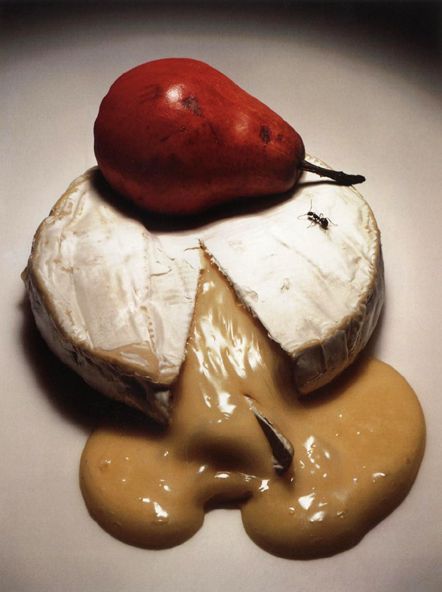Mold Toxicity

By @jenacovello @simpleorganix
Many people are now finding that the symptoms they struggle with daily are potentially linked to mycotoxins, a toxic substance produced by a fungus (mold). Because there are hundreds of different mold varieties, mycotoxins can affect every system in the body. They also may produce various reactive symptoms, often leading to misdiagnoses.
That said, a majority of mold exposure comes from food, skin contact, and inhalation of spore-born toxins. Some of the symptoms that are associated with mold exposure include:
- Respiratory problems, asthma, shortness of breath, and wheezing
- Allergies, hay fever, congestion, coughing, and sore throat
- Headaches, migraines, seizures, anxiety, depression, brain fog, vertigo, and dizziness
- Tinnitus, sinusitis, blurry vision, and watery eyes
- Joint pain, muscle pain, and arthritis
- Carb and sugar cravings, weight gain, hair loss, and autoimmunity
- Anger, mood fluctuations, unexplained frustration, insomnia, and fatigue
- Restless legs, numbness, and tingling
- Runny nose, stuffy nose, itchy throat, and nosebleeds
- Nervous system and kidney function issues, heart problems, liver congestion, and lung issues.
- Abdominal pain, gut issues, and changes in stool
Because exposure is so vast and often missed, testing to find mold toxicity is suggested for your home and body. Some of the things you can do to see if you have mold toxicity are using a DIY mold testing kit, hiring a professional mold remediation company that is a certified member of NAMP to identify and properly remove mold sources, lab blood tests, Great Plains Laboratory MYCOTOX urine panel, ERMI testing, and skin prick test. Once the mold is identified, some of the things you can do to detox include:
- Sanitize appliances like the refrigerator, washer and dryer, jetted tubs, microwave, and dishwasher. Some people use vinegar, hydrogen peroxide and tea tree oil or ammonia to kill mold and sanitize mildew on clothing.
- Remove old carpet and check walls, especially the wall under old tiles in bathrooms and kitchens.
- Kill, Bind, and Sweat method.
- Lavender Oil
- Black Walnut Hull is one of the most common ingredients in natural anti-fungal solutions sold worldwide. The hull of the black walnut (as well as the leaves) are anti-fungal, anti-parasitic, anti-bacterial, anti-septic and contain high levels of omega-3 fatty acids and other mold-based illness-fighting active ingredients such as tannin, quinone, iodine, and vitamin C. It’s been used for canker sores, sexually-transmitted skin disease sores, and psoriasis. It is also an excellent laxative, as constipation is a serious complaint among many mold victims. It can be taken internally or used topically.
- Ozone Oxygen Therapy, colloidal silver, coffee enemas, colon hydrotherapy, cryotherapy, and vitamin drips.
- Integrate omega-3 fatty acids from wild caught fish.
- Anti-inflammatory agents like CBD, turmeric, alpha lipoic acid, wild blueberries (make sure to wash them well), green tea, raw garlic, cherries, carrots, parsnips, celery juice, parsley, and walnuts.
- Wash and soak all fruits and veggies with organic white distilled vinegar to remove and reduce mold spores.
- Utilize bentonite clay, zeolite, activated charcoal, or Epsom bath salts.
- Liver, kidney, and heavy metal detox.
- Look into supplements like chlorophyllin, zinc, A, E, C, NAC, rosmarinic acid, silica, liposomal glutathione, and apple pectin.
- Help the gut with probiotics, enzymes, Restore supplement from Zac Bush, fulvic acid, humic acid, and gum arabic.
- Address emotional trauma and negative emotional behaviors.
Mold-Containing Foods:
- All types of cheese
- Fermented vegetables
- Nuts
- Vinegar and foods preserved in vinegar: Salad dressings, mustard, olives, white vinegar
- Sour cream, sour milk, buttermilk, yogurt
- Alcoholic beverages: Beer, wine
- Sourdough bread
- Preserved meats: Jerky (even organic and grass-fed jerky), smoked meats, smoked fish, sausages, corned beef, ham, bacon
- All dried fruits: Raisins, apricots, cranberries, figs, prunes
- Canned juice
- Canned tomatoes
Additional Information if you’re detoxing from mold:
- All sugar, honey, maple syrup and even fruits high in sugar should be avoided. High-sugar foods and processed foods should be avoided, as sugar will feed the fungal infection.
- Pineapple, melons, and citrus have a higher propensity for developing mold. Honeydew melon and cantaloupe are two prime examples; you can often see mold growing directly on the rind of these melons (unless a toxic fungicide has been applied, but it would be best to avoid that too!)
- You may want to avoid eating canned foods, even if those foods are not on the “mold-containing foods” list. If any mold spores enter a vat of food before it is divided up and canned, the spores can replicate in the can to a degree significant enough to cause illness.
- Coffee can contain mold spores; consider purchasing a mold-free brand of coffee, such as Bulletproof coffee. Bulletproof coffee goes through a special process to determine that it is free of mold and mycotoxins.
Although many of these methods are successful in remedying mold exposure toxicity, it often does take time to heal properly.
By Jena Covello and Natasha M
***THESE STATEMENTS HAVE NOT BEEN APPROVED OR REGULATED BY THE FDA. WE ARE NOT DOCTORS, THEREFORE ALWAYS CONSULT WITH YOUR DOCTOR FIRST.





